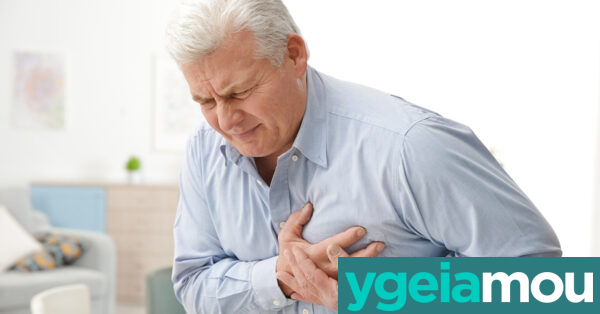[ad_1]
Mr. Spyridon Papaioannou, Cardiologist, Director of the 2nd Cardiology Clinic NNA, President of the Hellenic Society of Sports Cardiology and Doctor of the University of Athens, talks about the sudden cardiac death on ygeiamou.gr
THE Sudden Cardiac Death is an unexpected cessation of cardiac function, with imminent cessation of blood circulation, and is usually due to malignant arrhythmias-tachycardia (sustained ventricular tachycardia). If these (tachycardia) are terminated in time, automatically or through therapeutic interventions, then this is the sudden cardiac death prevented.
As for the general population, the most common causes of sudden cardiac death are due to underlying heart disease, diagnosed or undiagnosed. The most common underlying disease is coronary artery disease and sudden death can occur in the form of an acute myocardial infarction, or in the context of an old (pre-existing) infarction. In patients without a history of coronary artery disease, other structural heart diseases, hereditary or acquired, are usually underlying, such as dilated cardiomyopathy, hypertrophic cardiomyopathy, arrhythmogenic right ventricular cardiomyopathy, valvular diseases, and even an acute myocarditis.
In the absence of underlying heart disease, to a lesser extent, the cause of sudden cardiac death is usually found in disturbances in the excitatory (electrical) system of the heart, such as Brugada syndrome, long or short QT syndrome, catecholaminergic polymorphic ventricular tachycardia, or the syndrome Wolff – Parkinson – White.
As for the young people, meaning people under 35 years old, it is worth mentioning that based on epidemiological studies in USA, Denmark and Norway, respectively, the annual incidence was 1.3-3.2 sudden cardiac death events per 100,000 young people, with the largest percentage of them being male (75%). The most common cause of sudden cardiac death in this population is a primary arrhythmogenic cardiac death, accounting for about 31%. Also, coronary artery disease, hypertrophic cardiomyopathy and myocarditis are causes of sudden cardiac death in young people.
Symptoms – Warnings
Symptoms that may manifest as “warning signs” in the patient are directly related to the possible underlying heart disease. However, any patient or athlete experiencing chest pain (angina), difficulty breathing (dyspnea-not shortness of breath), fatigue, palpitations (fluttering), or fainting episodes (syncope) should seek cardiac evaluation.
Diagnostic approach – Prevention
The most valuable tool is the traditional electrocardiogram, which can provide a wealth of information to the physician. In addition, the echocardiogram (triplex), holter rhythm (in cases of palpitations), the fatigue test and the latest echocardiographic imaging methods, help in the early diagnosis of structural diseases. Cardiac magnetic resonance imaging is an extremely sensitive tool in highlighting damage to the heart muscle, while CT coronary angiography and (invasive) electrophysiological studies are emerging as useful tools in the diagnosis of many underlying heart diseases.
In patients who have survived sudden cardiac death, implantation of a permanent defibrillator is necessary and indicated immediately.
Finally, pre-sport testing is extremely useful and should be thoroughly performed by a cardiologist.
The recent and repeated episodes of sudden cardiac deaths in our country highlight the necessity of regular cardiological monitoring of patients and young athletes, especially those with symptoms such as those mentioned above. As I often say, it is better to diagnose an underlying heart disease early than to have to treat it, especially in an outpatient setting.
It is emphasized that the above data will be thoroughly analyzed at the 3rd International Congress of Sports Cardiology which will be held September 23-25 at the Amphitheater of the War Museum of Athens.
